
Wario is a character in Nintendo's Mario video game series that was designed as an arch-rival to Mario. Wario first appeared as the main antagonist and final boss in the 1992 Game Boy game Super Mario Land 2: 6 Golden Coins. His name is a portmanteau of the name Mario and the Japanese word warui, meaning "bad". Hiroji Kiyotake designed Wario, and Charles Martinet voiced the character from 1993 to 2023, as well as other characters in the series, including Mario, Luigi, and Waluigi.

Mario's Cement Factory is a 1983 LCD game developed and published by Nintendo under their Game & Watch series. It follows earlier Mario games, like the arcade and Game & Watch versions of Donkey Kong. Players control Mario as he navigates elevators and funnels cement through a factory, while trying to prevent the cement from crushing his fellow workers. Two versions of the game were released — a Table Top unit and a handheld game akin to most other Game & Watch titles. Development was headed by Nintendo R&D1, led by engineer Gunpei Yokoi.
WayForward Technologies, Inc. is an American independent video game developer and publisher based in Valencia, California. Founded in March 1990 by technology entrepreneur Voldi Way, WayForward started by developing games for consoles such as the Super NES and Sega Genesis, as well as TV games and PC educational software. In 1997, they relaunched their video games arm, placing the company as a contractor for publishers and working on a variety of licensed assets.
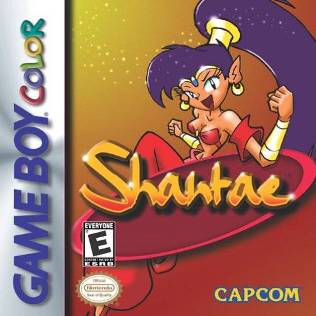
Shantae is a platform video game developed by WayForward and published by Capcom for the Game Boy Color in 2002. It is the first title in the Shantae series. The game follows the adventures of the eponymous half-genie Shantae, who must travel across Sequin Land, the setting of the series, to foil the domination plans of the evil lady pirate Risky Boots. During her quest, she learns various dances and acquires items which make her progressively stronger as well as unlocking new abilities and locations, leading her to ultimately face off against Risky in her hideout.
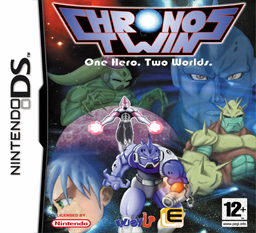
Chronos Twins, known in the PAL region as Chronos Twin, is an action-adventure game developed by Spanish studio EnjoyUP Games, released in the PAL region in 2007. It was also released in North America on January 18, 2010 and in Europe on May 14, 2010 as a download for the Nintendo DSi system. The game puts a different perspective on time travel than most games. Instead of revisiting an area in two different times, both screens show the same setting during two eras as gamers explore the land with a present-day hero. Chronos Twins was originally planned for release for Game Boy Advance, but after the rise of the Nintendo DS, the game's development switched to that system. An enhanced version for the Wii console entitled Chronos Twins DX was released in North America as a WiiWare download one week prior to the Nintendo DSi release. It was later released in the PAL region for WiiWare on April 2, 2010.

Tetris Party is a puzzle video game by Hudson Soft for WiiWare. An installment of the Tetris series, the game supports the use of Miis and the Wii Balance Board, and features both local and online multiplayer in addition to several single-player modes unique to the game.

The Nintendo DSi is a dual-screen handheld game console released by Nintendo. The console launched in Japan on November 1, 2008, and worldwide beginning in April 2009. It is the third iteration of the Nintendo DS, and its primary market rival was Sony's PlayStation Portable (PSP). The fourth iteration, entitled Nintendo DSi XL, is a larger model that launched in Japan on November 21, 2009, and worldwide beginning in March 2010. Development of the DSi began in late 2006, and the handheld was unveiled during an October 2008 Nintendo conference in Tokyo. Consumer demand convinced Nintendo to produce a slimmer handheld with larger screens than the DS Lite. Consequently, Nintendo removed the Game Boy Advance (GBA) cartridge slot to improve portability without sacrificing durability.
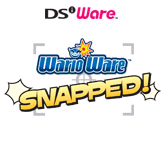
WarioWare: Snapped! is a minigame compilation party video game developed by Nintendo SPD Group No.1 and Intelligent Systems and published by Nintendo for the Nintendo DSi's DSiWare digital distribution service, and is part of the WarioWare series of video games. It is the sixth game in the series.

Yummy Yummy Cooking Jam is a video game by Spanish developer Virtual Toys. It is available for WiiWare, DSiWare, PSP minis, iPhone, and iPod Touch. The game won a Pulga award for Best Art at the Videogame Industry in Spain Awards in 2009, held at the Gamelab Interactive Leisure International Trade Fair.

Picopict, known as Pictobits in North America and as Pictopict in Australia, is a puzzle video game developed by Skip Ltd. and published by Nintendo for the Nintendo DSi's DSiWare digital distribution service. It is one of seven games released for the DSi's Art Style series of video games. It was announced on January 26, 2009, was released two days later alongside Somnium, another Art Style game, and was released in North America and PAL regions in the same year, on May 18 and May 22 respectively. In Picopict, players use the touchscreen to move coloured blocks into a formation, such as a four-block line or a 2x2 square. This contributes to an 8-bit image, which consist of various Nintendo Entertainment System (NES) characters, such as Mario, Link, and Bowser.
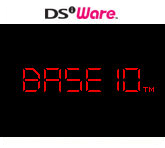
Code, known as Base 10 in North America and Decode in Japan, is a puzzle video game developed by Skip Ltd. and published by Nintendo for the Nintendo DSi's DSiWare digital distribution service.

Aquia, known as Aquite in Europe and Aquario in Japan, is a puzzle video game developed by Skip Ltd. and published by Nintendo for the Nintendo DSi's DSiWare digital distribution service. It was released at the launch of the Nintendo DSi and DSiWare service on April 5, 2009 in North America.

Dr. Mario Express, known in PAL regions as A Little Bit of... Dr. Mario, is a Mario action puzzle video game published by Nintendo. The game was released as a DSiWare title for the Nintendo DSi platform. Dr. Mario Express was released as a launch title for the DSiWare service in Japan on December 24, 2008, and was released in both North America and PAL regions in 2009. The game was developed by Arika, which had also created Dr. Mario Online Rx for WiiWare.

Dragon Quest Wars is a 2009 turn-based strategy video game developed by Intelligent Systems and published by Square Enix for the Nintendo DSi via its DSiWare download service. It is part of the Dragon Quest series and supports up to three other players in multiplayer.
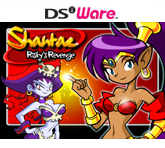
Shantae: Risky's Revenge is a platform video game developed by WayForward Technologies for the Nintendo DSi. The second installment in the Shantae series, Risky's Revenge is the sequel to the 2002 Game Boy Color video game Shantae, and follows series protagonist Shantae as she sets out to stop the ambitions of the nefarious pirate Risky Boots.

Pop Island is a Nintendo DSi video game by French developer ODENIS Studio. When the game was still available for purchase, it cost 200 Nintendo points, and could be downloaded at the DSi Shop. Pop Island is a capture the flag type game. The player's objective is to bring as many flags to their base as possible in a set amount of time, while trying to stop the opposing team from bringing flags to their base. The characters of Pop Island consist of 12 different animals such as a lion with wheels, surfing penguin, a fish, a skateboarding elephant and many others. A sequel, Pop Island – Paperfield, released in July 2010.

Pop Island – Paperfield is a Nintendo DSi video game by French developer ODENIS Studio. It is the sequel to Pop Island. When the game was still available for purchase, it cost 200 Nintendo points, and could be downloaded at the DSi Shop. Pop Island – Paperfield is a capture the flag type game. The player's objective is to bring as many flags to their base as possible in a set amount of time, while trying to stop the opposing team from bringing flags to their base. The characters of Pop Island consist of 12 different animals and vehicles, such as a lion with wheels, surfing penguin, a fish, a skateboarding elephant and many others.

Mighty Milky Way was an action puzzle video game for the Nintendo DSi. It was the second title after Mighty Flip Champs! in the Mighty series from WayForward Technologies. The game was released for download through DSiWare in North America, Europe, and Japan.

Mutant Mudds is a platform video game developed by Renegade Kid. Players control Max and Granny as they combat the titular invaders following a meteorite crash. The game was first released as a Nintendo 3DS eShop exclusive in 2012, and arrived on Microsoft Windows and iOS in 2012. An enhanced version of the game, titled Mutant Mudds Deluxe, was released in 2013 for Wii U and Microsoft Windows, and in 2016 for PlayStation Vita and PlayStation 4. The Nintendo 3DS version was updated as the enhanced version in 2014.

Wendy: Every Witch Way is an action platform video game published by TDK Mediactive and developed by WayForward Technologies for the Game Boy Color in 2001. The game centers on Wendy the Good Little Witch from the Casper the Friendly Ghost series. Wendy accidentally opens her aunts' chest containing magical stones, which upset the gravity of a floating castle that crashes onto her house. The player controls Wendy through four worlds with sixteen levels, with each world having three side-scrolling levels and one horizontal shooter stage. Inserting the game in the Game Boy Advance unlocks a new world exclusive to the console.



















